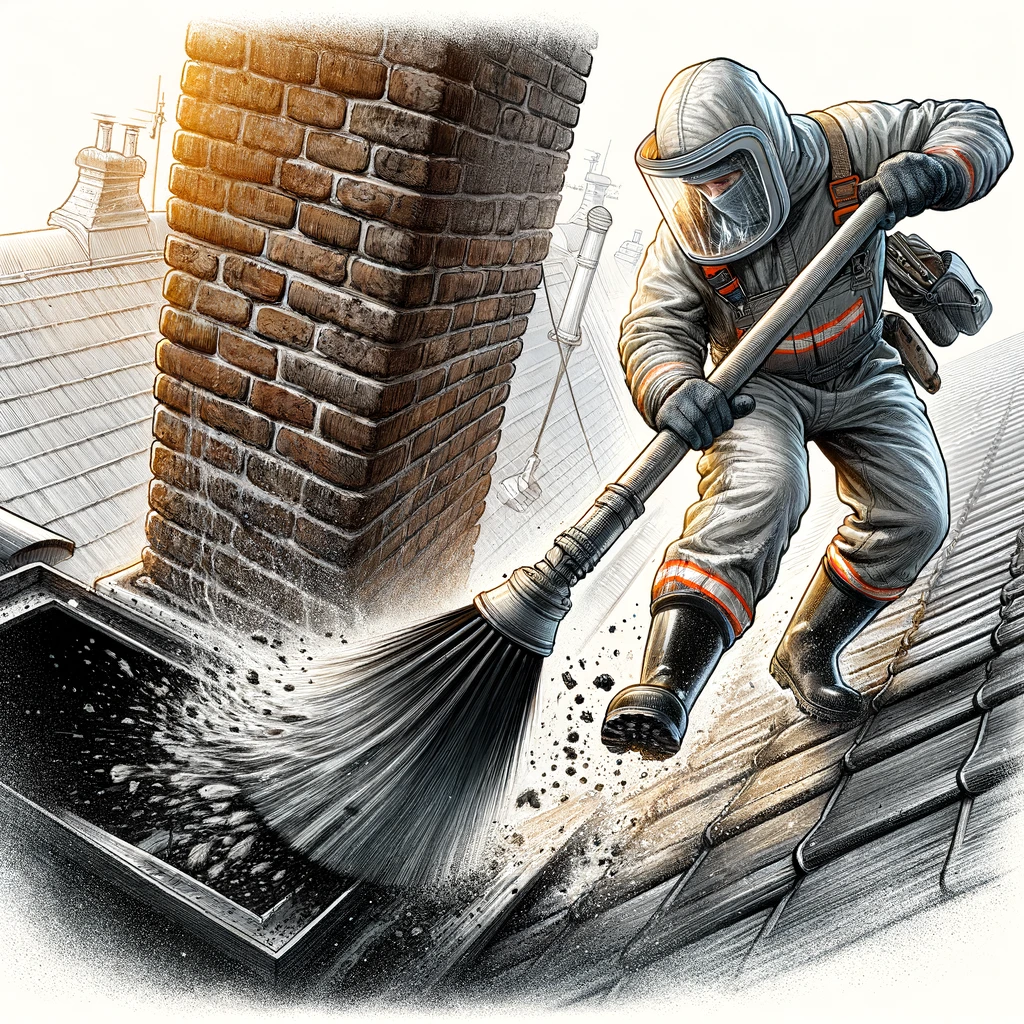
Chimney sweeping is a critical maintenance task that ensures the safe and efficient operation of your fireplace and chimney. Regular cleaning helps prevent chimney fires and carbon monoxide poisoning by removing soot, creosote buildup, and other obstructions. This article explores various chimney sweeping techniques, highlighting their importance and application to maintain a clean and functional chimney system.
1. Manual Brushing
The most traditional method of chimney sweeping involves the use of a manual brush. Chimney sweeps use brushes of varying sizes and stiffness to scrape the chimney walls and remove creosote and soot buildup. This technique is effective for regular maintenance and is suitable for chimneys with straightforward structures and minimal creosote accumulation.
2. Rotary Cleaning Systems
For more challenging cleaning tasks, especially those involving hardened creosote, rotary cleaning systems are employed. These systems utilize a motorized brush head attached to flexible rods that spin at high speeds, providing a thorough cleaning of the chimney flue. Rotary systems are particularly effective for removing glazed creosote, which is more difficult to eliminate with manual brushing.
3. Chemical Treatments
In some cases, chemical treatments are used in conjunction with physical cleaning methods to break down creosote buildup. Chemical agents can be applied before or after sweeping to help loosen creosote, making it easier to remove. These treatments are beneficial for maintaining the chimney between professional cleanings.
4. Vacuuming and Debris Removal
Vacuuming is a crucial step in the chimney sweeping process, ensuring that loosened soot and creosote are effectively removed from the chimney and the home. High-powered, industrial-strength vacuums are used to clean up the debris, preventing it from entering the living space and maintaining indoor air quality.
5. Camera Inspections
While not a cleaning technique per se, camera inspections are an essential part of modern chimney sweeping. These inspections allow chimney sweeps to identify blockages, damage, and buildup areas that require attention. Camera inspections ensure that the cleaning process is thorough and that any structural issues are addressed promptly.
6. Power Sweeping
Power sweeping is a more advanced technique that employs specially designed equipment to clean the chimney more efficiently and gently than traditional methods. Power sweeping tools can adapt to the chimney’s shape and size, providing a comprehensive clean without damaging the chimney structure.
The Importance of Professional Chimney Sweeping
Professional chimney sweeps are trained to select and apply the appropriate techniques based on the chimney’s condition, type, and usage. They ensure that the chimney is cleaned effectively, reducing the risk of fire and improving the heating system’s efficiency. Furthermore, professionals can spot early signs of damage or wear, recommending repairs before minor issues become major problems.
Conclusion
Chimney sweeping is a vital maintenance task that should not be overlooked. The techniques discussed ensure that your chimney remains clean, safe, and efficient. By hiring a professional chimney sweep who utilizes a combination of these methods, you can rest assured that your chimney is in good hands, protecting your home and loved ones from potential hazards. Regular chimney sweeping is an investment in your home’s safety and comfort, ensuring that your fireplace is ready to provide warmth and enjoyment for years to come.
